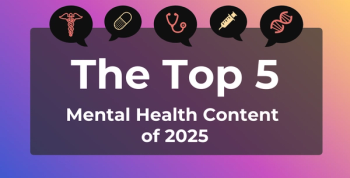
Many US Health Care Workers Face Poverty, Food Insecurity, and Housing Instability
Key Takeaways
- Financial hardship is widespread among health care workers, particularly in direct care roles, amid a workforce crisis and challenging job conditions.
- Direct care workers face the highest levels of poverty, food insecurity, and housing instability, with significant racial and ethnic disparities.
Health care workers face significant financial hardships, including food insecurity and housing instability, impacting retention and patient care quality.
Financial hardship—including poverty, food insecurity, and housing instability—was found to be common among US
The severe financial hardship detailed in the JAMA letter comes amid a sustained workforce crisis that makes these findings particularly urgent. A separate 2024
Additionally, most health care workers are already struggling with challenging job conditions: 80% report that staffing and resource shortages are at least somewhat problematic, and 75% report issues with stress and burnout. The new data on financial hardship—a major driver of turnover—intensifies concerns about the sector's ability to retain essential personnel.1,2
Researchers from Harvard Medical School and affiliated institutions analyzed nationally representative data from the US Census Bureau’s Survey of Income and Program Participation (SIPP) collected between 2020 and 2023.1 The analysis included 6905 health care workers across 5 occupational categories: physicians and surgeons, nurses, other diagnosing or treating practitioners, health technologists and technicians, and direct care or health care support workers.
The authors noted that workforce shortages—combined with burnout, poor working conditions, and stagnant wages—have raised concern about the economic well-being of essential health personnel. “Burnout, poor working conditions, and inadequate wages have been cited as key drivers of these shortages,” they wrote, adding that financial hardship itself can further influence retention and job performance.
Using SIPP’s weighted, nationally representative data, the team examined indicators of financial strain such as poverty status, participation in public assistance programs, and self-reported measures of food or housing insecurity. Logistic regression models adjusted for age, sex, race, ethnicity, and immigration status.
Direct care and support workers, who made up the largest group in the sample (n = 2548), had the lowest personal and family incomes and the highest proportions of Hispanic (22.4%) and non-Hispanic Black (23.5%) individuals. In contrast, physicians and surgeons (n = 562) reported the highest incomes and the lowest levels of financial hardship.
Rates of hardship varied sharply by occupation. Among direct care and support workers, 9.6% lived below the federal poverty line, nearly one-quarter (24.5%) experienced food insecurity, and 13.6% reported housing instability. Among nurses, other diagnosing/treating practitioners, and health technologists or technicians, poverty rates ranged from 1.8% to 3.6%, food insecurity from 5.4% to 11.4%, and housing instability from 3.3% to 7.1%. Physicians reported the lowest rates across all indicators.
In adjusted analyses, direct care and support occupations were most strongly associated with financial distress. Compared with physicians, these workers had higher odds of poverty (OR, 6.45; 95% CI, 2.18-9.09), food insecurity (OR, 5.04; 95% CI, 2.93-8.66), and housing instability (OR, 13.89; 95% CI, 6.15-31.38). Health technologists and technicians also showed increased odds of food insecurity (OR, 2.17; 95% CI, 1.21-3.89) and housing instability (OR, 4.02; 95% CI, 1.65-9.81).
The researchers reported that at least 1 indicator of food insecurity affected 1 in 4 direct care workers and 1 in 10 health technologists or technicians—levels that the authors claimed exceed previous national estimates.
The authors also highlighted inequities within the workforce, noting that racial and ethnic minority groups were overrepresented in the lowest-paid health care occupations. “Racial and ethnic minority groups were disproportionately represented in low-wage, direct care/support occupations, raising critical questions about the ethics and sustainability of current work arrangements,” the report stated.
These findings may have broader implications for workforce stability and patient care. Economic stress among health care workers has been linked to decreased productivity and increased turnover, which could intensify existing workforce shortages. Federal projections suggest that the US may face deficits of more than 180,000 physicians and 200,000 registered nurses in the next decade.
The authors acknowledged several study limitations, including potential inaccuracies in self-reported income and hardship measures and limited sample sizes for some occupations. Nonetheless, the analysis offers a detailed national snapshot of financial hardship within the health workforce and highlights the need for further policy and economic research targeting low-wage health care occupations.
References
- Zhong A, Gao C, Szlosek D, Nguyen D, Amat MJ, Phillips RS. Poverty, food insecurity, and housing instability among US health care workers. JAMA. Published online October 22, 2025. doi:10.1001/jama.2025.17422
- Toward an employee value proposition (EVP) in the healthcare sector. TIAA Institute. 2024. Accessed October 22, 2025.
https://www.tiaa.org/public/institute/publication/2024/toward-an-employee-value-proposition-evp-in-the-healthcare-sector
Newsletter
Stay ahead of policy, cost, and value—subscribe to AJMC for expert insights at the intersection of clinical care and health economics.







































